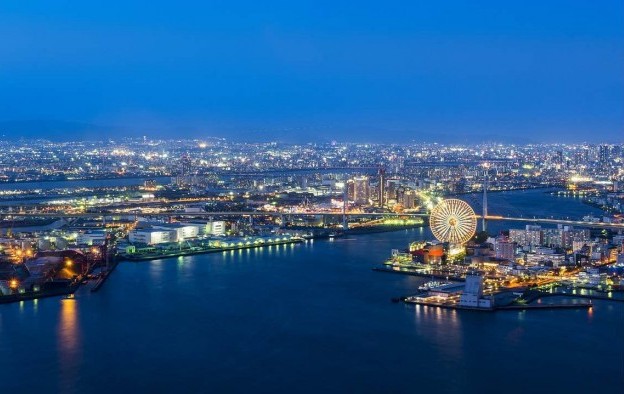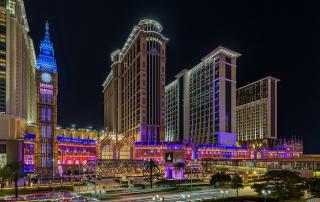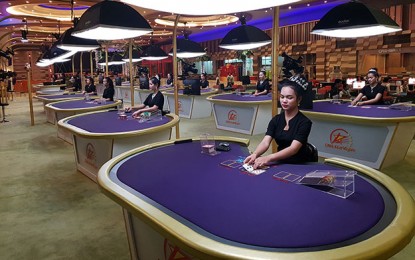Osaka wants US$8.5 billion casino investment: reports
Feb 12, 2019 Newsdesk Japan, Latest News, Top of the deck

Details of Osaka prefecture’s strategy for a so-called integrated resort or “IR” have been previewed by Japanese media ahead of a formal announcement this week.
The “Osaka IR basic plan” reportedly calls for a JPY930-billion (circa US$8.5-billion) investment, somewhat short of the estimated US$10-billion figure mentioned by several large U.S.-based casino operators as the likely required investment in Japan. That is according to reports in, respectively, the Yomiuri Shimbun and Asahi Shimbun.
Asian casino entrepreneur Lawrence Ho Yau Lung, chairman of Melco Resorts and Entertainment Ltd, has mentioned Osaka as a front runner with Japan’s central government when it comes to hosting a casino, and an interesting target for his firm’s bid.
The Osaka IR basic plan is to be considered as a guideline to establish casino resort plans in detail and to select an IR operator by Osaka prefecture and city. A panel of people described as experts in the sector has been advising the Osaka authorities, and held on February 6, a 9th round of meetings on the topic.
According to reports of Osaka’s plan, the city (pictured) has set an ambitious project opening date of 2024, and has suggested the scheme would occupy 60 hectares (148 acres) of land.
An advisor to Japan’s government said during the conference segment of the MGS Entertainment Show, a casino trade event and conference in Macau in November, it was likely to be 2025 at the earliest before any of three initially-permitted resorts could open. At the same event a Japan-based consultant from business services firm EY, said it was more likely to be 2027.
Osaka has been one of the most vocal local governments in terms of its support for hosting a large-scale casino complex with conference and other tourism facilities as foreseen under Japan’s casino liberalisation policy.
According to reports, Osaka has also been bullish in its estimates on the number of annual visitors such a facility could bring, and the revenue it could generate.
The Osaka IR basic plan is said to mention circa 25 million visits being generated annually. It anticipates 18.9 million visits will be from non-gambling customers, and 5.9 million by those wishing to take part in gambling amongst other things.
The whole Macau tourism market, serving largely mainland China next door to that city, managed to generate just under 36 million visits for the whole of 2018.
Osaka estimated the annual revenue of an IR operator in the city would be JPY480 billion, of which JPY380 billion – circa 80 percent of aggregate revenue – would come from casino operations. The annual economic contribution to Osaka from the project would be JPY70 billion, although reports did not specify in what form – such as taxation – the city’s share would be generated.
In early February Kyodo news agency reported that hotels at the country’s casino resorts would be required to have an aggregate of 100,000 square metres (1.08 million sq feet) of hotel accommodation; and meeting space amounting to up to 120,000 sq metres, capable of accommodating up to 6,000 people. The report quoted a government announcement.
Kyodo reported that the aspirations far outstripped what was offered currently in any Japanese leisure and conference facility.
National ordinance on IR
On February 6, the Liberal Democratic Party, the lead partner in a national coalition government, discussed a government draft ordinance relating to the IR Implementation Bill passed last year. The ordinance is expected to outline more detail relating to the general principles set out in the law.
Public comment on the draft ordinance started on February 1 and is due to end on March 4, with a cabinet resolution due in March and the ordinance likely to take effect from April 1, according to GGRAsia’s Japan correspondent.
The draft ordinance sets out the scope of the required core facilities for IR schemes: its conference, exhibition and hotel space; its role as a representation of Japanese culture and as a Japan-wide attraction; and its role as a gateway for tourism in each resort’s hinterland.
In other casino-related news, on February 5 Miyagi prefecture in Tohoku flagged tentative interest in attracting a casino resort to its community, allocating JPY5 million for a feasibility study.
The governor, Yoshihiro Murai, reportedly stressed that one of the policies in developing the prefecture’s financial year 2019 budget was to enhance local tourism. It was said to be part of an effort to revitalise the wider Tohoku region economy, which was badly affected by the 2011 earthquake and subsequent tsunami that devastated parts of Japan’s east coast.
Meanwhile Aichi prefecture and the prefecture’s largest city Nagoya – which both qualify as eligible to apply to host a casino resort – have still to declare their respective positions on the matter.
Aichi’s sitting governor, Hideaki Omura, won on February 3 a third term by a large margin, according to local media. Although Mr Omura reportedly did not specifically mention a casino resort in his election manifesto, he is said to favour development of meetings incentives, conferences and exhibitions – also known as MICE – business at Chubu Centrair International Airport, which serves the prefecture’s Tokoname city.
Nagoya’s mayor Takashi Kawamura said in late January that the city would decide before the summer whether it wished to make a move to be a casino project host. Affirming such a step could put Aichi and its largest settlement in competition.
(Updated 9.20am, Feb 13)
Related articles
-
 Hokkaido assembly LDP reps show...
Hokkaido assembly LDP reps show...Jun 25, 2024
-
 MGM Osaka developer environmental...
MGM Osaka developer environmental...Jun 20, 2024
More news
-
 Donaco EBITDA up y-o-y to above US$4mln...
Donaco EBITDA up y-o-y to above US$4mln...Jul 26, 2024
-
 HK listed Palasino upgrades Czech...
HK listed Palasino upgrades Czech...Jul 26, 2024
Latest News
Jul 26, 2024
Border-casino operator Donaco International Ltd has achieved a 164.17-percent year-on-year increase in its latest quarterly group earnings before interest, taxation, depreciation and amortisation...Sign up to our FREE Newsletter
 (Click here for more)
(Click here for more)
Pick of the Day
”We’ve got more traction outside of Macau at the moment. But Macau’s going be a bigger focus for us”
David Punter
Regional representative at Konami Australia
Most Popular
 Sheraton brand to exit Londoner Macao, to be Londoner Grand July 25, 2024
Sheraton brand to exit Londoner Macao, to be Londoner Grand July 25, 2024  Macau regulator probes unlicensed gaming agents July 24, 2024
Macau regulator probes unlicensed gaming agents July 24, 2024  Philippines gives 20k aliens in POGOs 60 days to leave July 25, 2024
Philippines gives 20k aliens in POGOs 60 days to leave July 25, 2024  Philippines-listed DigiPlus says not affected by POGO ban July 24, 2024
Philippines-listed DigiPlus says not affected by POGO ban July 24, 2024  Sands China 2Q EBITDA down q-o-q amid low hold, renovation July 25, 2024
Sands China 2Q EBITDA down q-o-q amid low hold, renovation July 25, 2024






